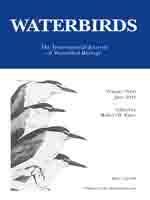Behavior by a foraging seabird during the breeding season can be examined by analyzing time invested throughout the foraging route to determine the presence of Area-Restricted Search (ARS) as well as other characteristics related to the shape of the foraging path and activity (flying, resting or diving). Forty-six Imperial Cormorants (Phalacrocorax atriceps), 18 males and 28 females breeding at Punta León, Argentina (43°04′S; 64°2′W), were fitted with GPS loggers recording one foraging trip (sampling interval: 1 second) in 2004, 2005, 2007 and 2008. Trip duration was longer, on average, for females (6.3 ± 1.9 h) than males (5.3 ± 1.6 h) (Mann-Whitney U test z 1,45 = 2.23, P = 0.026), but year had no significant effect on any of the path characteristics. ARS was detected in 43 individuals, 22 of which made smaller-scaled searches nested within larger ARS areas. Search scale was not correlated to maximum distance reached and did not differ between sexes nor years. Cluster analysis separated four types of behavior: short direct return trips (N = 7), long direct return trips (N = 31), random flight searches (N = 6) and loops (N = 2), with each behavioral type present in both sexes. Behavioral variability within a population may be due to differences in targeted prey type and spatio-temporal stability during the season, as well as to individual physiological constraints and life-history traits linked to how individuals search for food at sea.
How to translate text using browser tools
1 June 2012
Prey Search Behavior of the Imperial Cormorant (Phalacrocorax atriceps) during the Breeding Season at Punta León, Argentina
Sabrina Harris,
Flavio Quintana,
Andrea Raya Rey
ACCESS THE FULL ARTICLE

Waterbirds
Vol. 35 • No. 2
June 2012
Vol. 35 • No. 2
June 2012
area-restricted search
Imperial Cormorant
Phalacrocorax atriceps
search behavior




